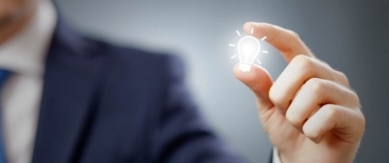In a previous article, “Disruptive Technologies Poised to Drastically Alter Small-Business Landscape,” I reported the “Twelve potentially economically disruptive technologies” as identified by the McKinsey Global Institute.
The third item on the list, “Internet of Things,” was new to me. (If it’s new to you as well, Wikipedia provides a thorough explanation.)
In a recent McKinsey & Company article/interview, the authors state the following:
“In what’s called the Internet of Things, the physical world is becoming a type of information system—through sensors and actuators embedded in physical objects and linked through wired and wireless networks via the Internet Protocol.
“In manufacturing, the potential for cyber-physical systems to improve productivity in the production process and the supply chain is vast. Consider processes that govern themselves, where smart products can take corrective action to avoid damages and where individual parts are automatically replenished.”
In the piece, the two interviewees, Siegfried Dais, the deputy chairman of the board of management at German engineering company Robert Bosch GmbH, and Heinz Derenbach, CEO of Bosch Software Innovations GmbH, claim the Internet of Things is poised to spark the world’s fourth industrial revolution.
Pretty cool stuff.



Nathan,
Couple of points that I would be happy to discuss further.
One:
Xerox (although generally unaware) is poised to be a major player in this Internet of Things industry. This is a “Xerox did it first” story. Xerox has provided remote device connectivity to its products and competitive product from the 80’s. Yep, we had a system called RIC (Remote Interactive Connectivity) in the late 80s which provided dial-up communications to equipment for the purpose of collecting; service, usage, and status information. Today our Remote services capability is a market differentiation. This internal capability (which Xerox has more than one version of) could be extended to be an industry offering.
Two:
A key step which the Wiki site fails to articulate is that the Internet of Things ultimately renders the product as only one step of a life cycle which begins and ends with Data. The product itself is simply the physical instantiation of: Ideas, Resources, Processes, Relationships, Functions, Transactions, all of which exist in data / information before and after the device itself physically exists. This concept of “Virtual first and last” is where the revolution begins.
Daniel
Thanks, Daniel, for adding your informative historical context. I definitely was one who could’ve been categorized as “generally unaware,” so I appreciate your perspective.